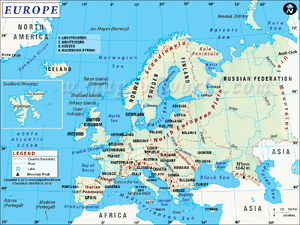Carpetani

| Author:Laxman Burdak, IFS (R) |

Carpetani were one of the Celtic pre-Roman peoples of the Iberian Peninsula (the Roman Hispania, modern Spain and Portugal), akin to the Celtiberians, dwelling in the central part of the meseta - the high central upland plain of the Iberian Peninsula.
Variants of name
- Karpetanoi (Greek)
- Carpetania
- Carpetanian
- Karapatha (Sanskrit:कारपथ)
- Carpathian Mountains (Sanskrit:कार्पेथियन पर्वत)
Location
Since the 5th century BC the Carpetani inhabited the Toledo and Alcaraz highland ranges along the middle Tagus basin, occupying a territory that stretched from the Guadarrama river at the north to the upper Anas (Guadiana) in the modern provinces of Guadalajara, Toledo, Madrid and Ciudad Real, an area designated as Carpetania in the ancient sources. Main city-states (Civitates) in the region were Toletum (near modern Toledo; Roman or Celtiberian-type mint: Tole), Iplacea/Complutum (Alcalá de Henares – Madrid; Celtiberian-type mint: Ikezancom Konbouto?), Consabura (Consuegra – Toledo), Barnacis (Orgaz – Ciudad Real; Celtiberian-type mint: Bornaiscom), Laminium (Argamasilla de Alba or Alhambra – Ciudad Real) and Alce (Campo de Criptana – Ciudad Real). Towns of lesser importance were Aebura (Cuerva – Toledo), Metercosa (Madridejos – Toledo), Ispinum (Yepes – Toledo), Miaccum (Casa de Campo – Madrid), Mantua (Montiel – Guadalajara), Thermida (Trillo – Guadalajara), Ilarcuris (Horche – Guadalajara) and Ilurbida (Lorvigo, near Talavera de la Reina – Toledo).
The exact location of the remaining Carpetanian towns is either uncertain or unknown, this is true in the cases of Dipo[1] (near Toledo?), Libora,[2] Varada, Titulcia, Caracca or Characa,[3] Rigusa, Paterniana, and Alternia.
Origins
The origins of the Carpetani are obscure though their ruling elite certainly had Celtiberian[4] and Gallic-Belgae elements, whose ancestors arrived to the Peninsula in the wake of the Celtic migration at the 4th century BC;[5] the rest of the population was clearly Indo-European and very mixed, including people of native Ibero-Tartessian and Indo-Aryan affiliation.
Recent analysis of local epigraphic sources revealed that the Carpetani comprised some twenty-seven tribes, namely the Aelariques, Aeturiques, Arquioci, Acualiques, Bocouriques, Canbarici, Contucianci, Dagencii, Doviliques, Duitiques, Duniques, Elguismiques, Langioci, Longeidoci, Maganiques, Malugeniques, Manuciques, Maureici, Mesici, Metturici, Moenicci, Obisodiques, Pilonicori, Solici, Tirtaliques, Uloques, and Venatioques.[6] Culture
In archeological terms, it is now believed that they stemmed from both the transitional Late Bronze Age/early Iron Age ‘Campiñas de Madrid’ farmers’ and the ‘Cogotas I’ cultural groups.
Only a few Carpetanian towns appear to have issued their own currency, modelled after Roman patterns copied directly or adapted via Celtiberian coinage. In the 2nd century BC, Iplacea/Complutum and Barnacis struck coins with their names marked in Celtiberian script, whilst later Toletum struck theirs bearing its name in Latin script.[7]
History
By the later part of the 3rd century BC, the Carpetani had evolved into a sort of federation or loose tribal confederacy whose nominal capital was set at Toletum, with several centres of power in the main towns ruled by petty kings (Latin: Reguli). Some of these Rulers appear to have risen to prominence in the early 2nd century BC – one king Hilernus led a coalition of Carpetani, Vaccaei, Vettones and Celtiberians against consul Marcus Fulvius near Toletum in 193 BC, but he was defeated in battle and captured;[8] another Regulus, Thurrus, ruler of Alce signed a treaty with Tiberius Sempronius Gracchus the Elder in 179 BC.[9] Prior to the Second Punic War, they opposed Carthaginian expansion in central Spain, but in 219 BC Hannibal defeated a combined force of Vaccaei, Olcades and Carpetani,[10] thus completing his conquest of Hispania south of the Ebro with the exception of Saguntum.[11] They also provided mercenary troops to the Carthaginian armies, for Frontinus mentions the desertion of 3,000 Carpetani warriors from Hannibal’s army when he entered in Italy after crossing the Alps.[12]
References
- ↑ Livy, Ab Urbe Condita, 39: 30.
- ↑ Some archeologists place it somewhere between Augustobriga and Toledo, in either Cuevas or Montalbán.
- ↑ Plutarch, Sertorius, 17.
- ↑ 1. Herodotus, Istoriai, II, 33; IV, 49.2. Strabo, Geographikon, III, 4, 12.
- ↑ 1. Pliny the Elder, Naturalis Historia, III, 29. 2. Appian, Iberiké, 2.
- ↑ Julián Hurtado Aguña, Las gentilidades presentes en los testimonios epigráficos procedentes de la Meseta meridional (2003-2004), pp. 185-206.
- ↑ Jesús Corrobles Santos, Los Carpetanos, in Prehistoria y Protohistoria de la Meseta Sur… (2007), pp. 194-195.
- ↑ Livy, Ab Urbe Condita, 37: 7, 6.
- ↑ Livy, Ab Urbe Condita, 29: 40, 49.
- ↑ Polybius, Istorion, III, 13-14.
- ↑ Livy, Ab Urbe Condita, 21: 5, 2.
- ↑ Frontinus, Stratagematikom, II, 7.

